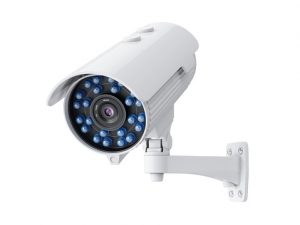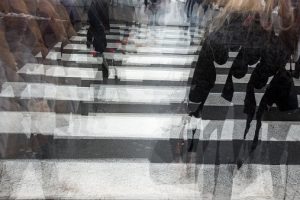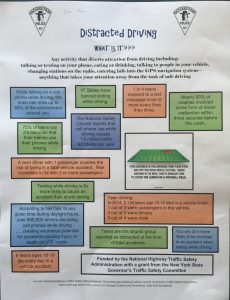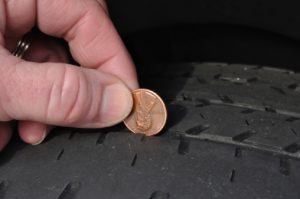The Risks Of Autumn Driving In Buffalo, New York
 The clocks have turned back an hour, the foliage has come and gone, and November is in full swing. What does this mean for drivers in the Buffalo area? According to a 2016 report by Statista (the most recent report), 2,998 people lost their lives on US roadways during the month of November. And as drivers in Buffalo know very well, motor vehicle accidents often occur this time of year due to shorter days, longer nights and increasingly hazardous weather conditions.
The clocks have turned back an hour, the foliage has come and gone, and November is in full swing. What does this mean for drivers in the Buffalo area? According to a 2016 report by Statista (the most recent report), 2,998 people lost their lives on US roadways during the month of November. And as drivers in Buffalo know very well, motor vehicle accidents often occur this time of year due to shorter days, longer nights and increasingly hazardous weather conditions.
Shorter days, more hazardous driving conditions
After daylight savings time ends, motorists spend more time driving in the dark. According to the National Safety Council (NSC), this can create limitations in visibility:
- On average, drivers may only see up to 250 feet without high-beams
- Drivers who use high-beams may see up to 500 feet
- Drivers around 50 years old may require twice as much light as drivers around 30 years old.
Daylight savings can also affect drivers’ circadian rhythm or internal clock. The prolonged nighttime hours can increase the release of a natural chemical called melatonin, which programs us to sleep. This can put drivers at risk of falling asleep behind the wheel. In fact, according to the New York State Governor’s Traffic Safety Committee, accidents caused by drowsy driving are most likely to happen during the first week of the time change.
According to 2014 statistics by New York State Department of Motor Vehicles (the latest statistics), there were a total of 1,343 traffic accidents caused by drowsy driving statewide, which resulted in eight fatalities and 687 injuries. Another 5,198 accidents were caused by limited or obstructed visibility. This resulted in 20 fatalities and 2,231 injuries.
What to watch out for this season
According to Esurance, the month of November often ushers in slippery road conditions that Buffalo drivers must adjust to.
These include:
- Wet roads, fallen leaves: After the foliage comes to an end, leaves may cover the roadways. When combined with rain and dampness, fallen leaves can be just as slippery as ice. Additionally, they can cover traffic lines in the road, making it more difficult for drivers to navigate.
- Icy road conditions: As the temperature dips below freezing overnight, ice and frost can develop on the roadways. Drivers should especially be aware of icy road conditions when approaching bridges, underpasses, and other areas that may not receive a sufficient amount of sunlight.
- Occasional snow: While snow is more likely to happen during the winter months, it can happen in November, especially in the Buffalo area. Drivers unprepared for the first snowfall of the season in Buffalo (which usually occurs in late October) can be at risk of causing an accident.
During the month of November, Buffalo drivers are urged to reduce their speed, maintain a safe following distance, avoid distracted driving, and stay sober. If you or a loved one was injured in a crash caused by another driver, contact our law firm and find out how we can help you.





 Putting your loved one in a nursing home can be a tough decision. Nursing homes in greater Buffalo are obliged to provide the best possible care to residents, but they do not always meet that obligation. The risk of nursing home abuse and neglect may leave you concerned about the level of care your loved one will receive.
Putting your loved one in a nursing home can be a tough decision. Nursing homes in greater Buffalo are obliged to provide the best possible care to residents, but they do not always meet that obligation. The risk of nursing home abuse and neglect may leave you concerned about the level of care your loved one will receive. Many studies focus on the hazards of driving drunk in Buffalo, and further about how this can heighten the risk of pedestrian accidents.
Many studies focus on the hazards of driving drunk in Buffalo, and further about how this can heighten the risk of pedestrian accidents. A section of Niagara Falls Boulevard has proven to be so dangerous for pedestrians that safety officials have vowed to make immediate road safety changes. The section of I-290 separating Tonawanda and Amherst is so congested with confusing vehicle traffic patterns that it has become a
A section of Niagara Falls Boulevard has proven to be so dangerous for pedestrians that safety officials have vowed to make immediate road safety changes. The section of I-290 separating Tonawanda and Amherst is so congested with confusing vehicle traffic patterns that it has become a  It’s prime time for discussing the risks of drunk driving collisions as we enter the second half of summer and head toward the start of football and the upcoming holiday season.
It’s prime time for discussing the risks of drunk driving collisions as we enter the second half of summer and head toward the start of football and the upcoming holiday season.
 Like other cities across the United States, Buffalo has suffered from the effects of distracted driving. Distracted driving has become an even more pervasive problem in recent years as in-vehicle technology becomes more prevalent in new vehicles. Unfortunately, driver behavior has not been consistent with either the available accident data or public opinion surveys, all of which demonstrate that distracted driving leads to accidents.
Like other cities across the United States, Buffalo has suffered from the effects of distracted driving. Distracted driving has become an even more pervasive problem in recent years as in-vehicle technology becomes more prevalent in new vehicles. Unfortunately, driver behavior has not been consistent with either the available accident data or public opinion surveys, all of which demonstrate that distracted driving leads to accidents. Buffalo car accidents happen for many reasons. Distracted driving, impaired driving, speeding, and many other unsafe driving habits can increase the chances of causing a car accident. Buffalo’s infamous winter weather can linger well into April and also increase the likelihood of being injured in a car accident.
Buffalo car accidents happen for many reasons. Distracted driving, impaired driving, speeding, and many other unsafe driving habits can increase the chances of causing a car accident. Buffalo’s infamous winter weather can linger well into April and also increase the likelihood of being injured in a car accident. Tires are vital pieces of vehicle safety equipment that are easy to take for granted. Many drivers run their vehicles for thousands of miles without considering the inflation and tread of their tires. It can be easy to forget about the extensive wear and tear to which tires are subjected – at least until there is a problem.
Tires are vital pieces of vehicle safety equipment that are easy to take for granted. Many drivers run their vehicles for thousands of miles without considering the inflation and tread of their tires. It can be easy to forget about the extensive wear and tear to which tires are subjected – at least until there is a problem. When it comes to winter driving in New York, motorists in Buffalo are old pros. But even pros are no match for the dangers posed by black ice.
When it comes to winter driving in New York, motorists in Buffalo are old pros. But even pros are no match for the dangers posed by black ice.